“Everyday I get to care for the people in my community.”
Your donation will help Rose provide care in the maternity ward in Haiti.
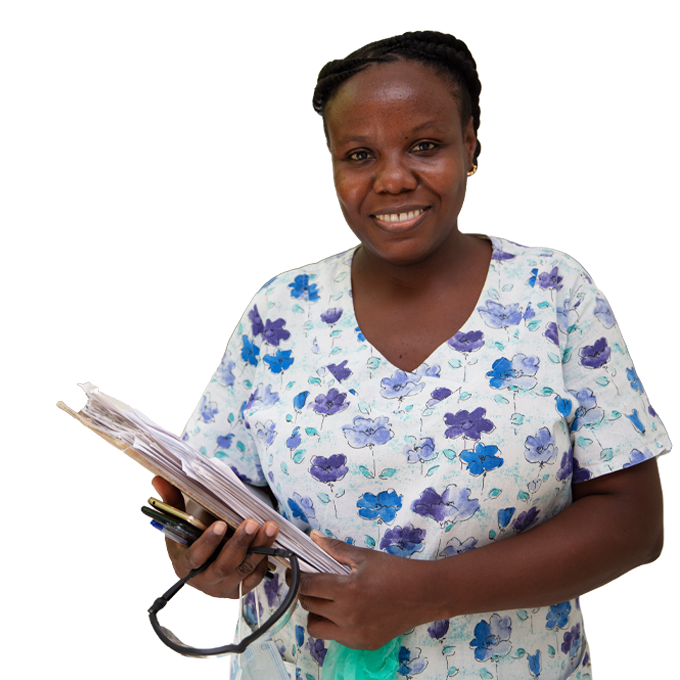
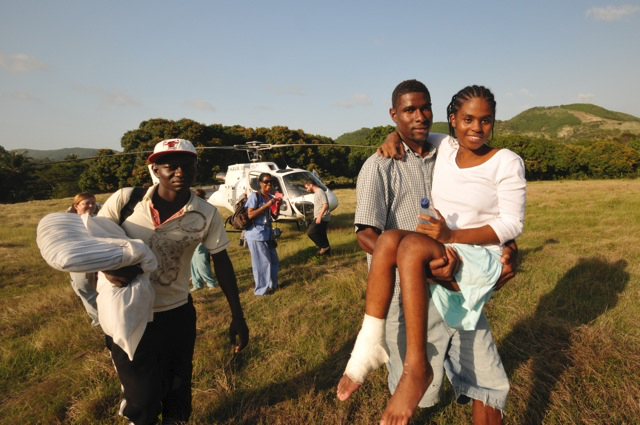
2010 earthquake survivor Fabian Jean arrives at SBH shortly after the disaster.
Ten years ago I was sitting, as I am today, here at SBH in Fond des Blancs, Haiti. I was a newlywed and father of young children. My wife Elisabeth and I loved our life here and planned to raise our growing family in Haiti.
At 4:53 PM on January 12, 2010, all of that changed. A 7.0 magnitude earthquake struck just outside of Port-au-Prince, killing over 250,000 people. Fond des Blancs was 100 miles from the earthquake’s epicenter, and we did not immediately recognize that the terrifying shaking we felt was the deadliest natural disaster in modern times.

Staff worked together to unload airlifted supplies as quickly as possible.
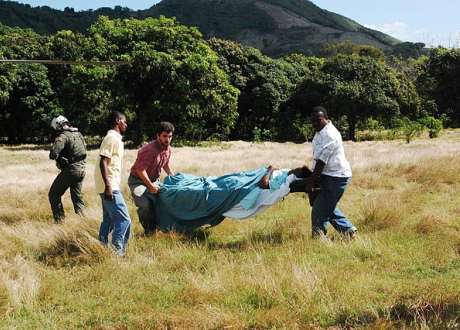
Dozens of patients were airlifted to SBH after the disaster.
Elisabeth and our children were in Port-au-Prince when the earthquake struck. They survived unharmed, but that is merely a matter of luck. Moments before she was to enter our local grocery store, the earth shook and the store collapsed. Nearly everyone inside perished.
My family is among the fortunate few who came away from the earthquake intact, and for that, we will be forever grateful. Almost immediately, Elisabeth and our kids joined thousands of other Haitians as “earthquake refugees” and decamped to Boston. I stayed behind to work on disaster response.
All Haitians, whether they are in Haiti or abroad, were touched by the events of January 12th and the ensuing months of chaos. The collective trauma is relived every year as we approach the anniversary of the earthquake. Forever seared in the national consciousness are the days spent hoping for news from loved ones, and the heartbreaking calls confirming the worst. The scenes of buildings destroyed, and bodies piled up in the streets. And for many, the seemingly endless days beneath the rubble as they awaited help.
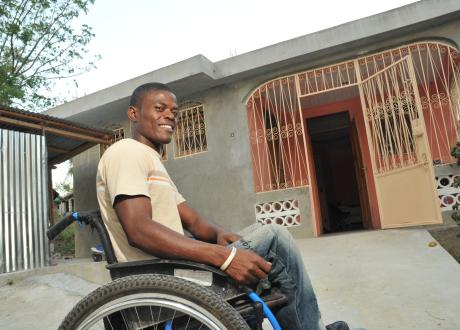
2010 earthquake survivor Maxsony in 2014.
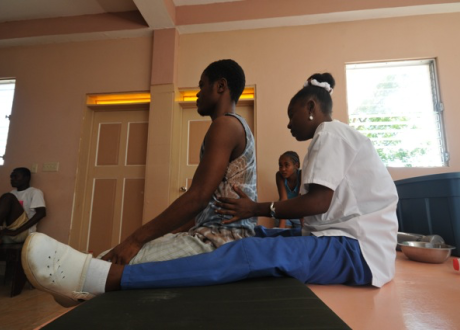
Physical therapy at the SCI center is a critical part of the healing and rehabilitation process for Maxsony and countless others.
In the decade since the tragedy, SBH has grown from a primary care clinic to the largest healthcare provider for over two million people on Haiti’s southern peninsula. Though forged in the wake of utter devastation, the partnerships that supported our expansion are invaluable. Though I would like to, I cannot possibly name every foundation and individual who stood by us through a decade of growth and transition. I can, however, say that our ability to treat every person who comes to our gates is the result of a true team effort. The Haitian proverb men anpil chay pa lou—many hands make light the load—has never been truer than when said about our friends and colleagues around the world. To all of you, thank you.
It is not hyperbole when I state that we could not have done this work without our remarkable staff in Haiti, our dedicated team in Boston, and our talented Board of Directors.
Under the extraordinary leadership of HEI/SBH Board member Jim Ansara, Build Health International expanded our hospital campus to include a maternity ward and NICU, a 24/7 emergency room, an infectious disease center, a surgical center, a diagnostic laboratory, and a 10,000 square foot warehouse in which we store vital medications and supplies. The volunteers and employees at BHI worked night and day to design, build, and maintain structures that are as sturdy as they are dignified. They will withstand any disaster that may strike, and our staff are proud to work there.
The W.K. Kellogg Foundation, in a renewed commitment to Haiti, has ensured the safe delivery of thousands of babies; pre-and post-natal care for expecting mothers; and emergency obstetric procedures for tens of thousands of women. In the NICU, they have allowed us to care for our most fragile newborns with compassion and dignity. Thanks to BHI, WKKF, and you, we are able to help the people who need us most.
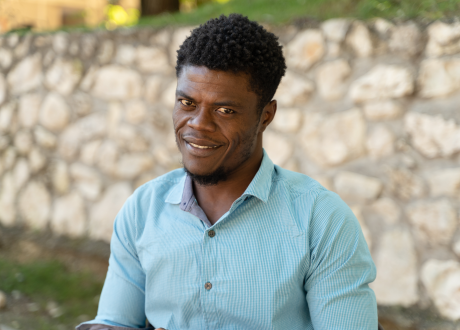
Maxsony, 10 years later.
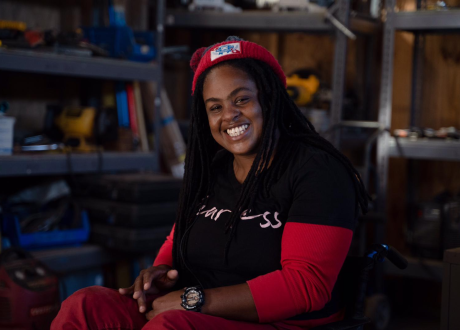
Fabian Jean, 10 years later.
I know that some of you witnessed the care we provide on the CBS This Morning segment featuring HEI/SBH. You were also introduced to Maxsony, an earthquake survivor and SBH employee. He was trapped under rubble for three days and emerged to find that both of his legs were paralyzed. Today, thanks to our Spinal Cord Injury Center, he is working to help make Haiti more equitable to people with disabilities. His story is nothing short of remarkable. And it is just one example of the strength, resilience, and courage shown by our patients and staff in the years since the earthquake. Mamille, Fabian, Sophia, and many others also embody the hope and generosity of the past ten years. If you haven’t yet seen the segment, I urge you to do so. I think that you will find inspiration in Maxsony and the entire staff—people who are saving lives every day.
Our team came out of the earthquake unified and more committed than ever to our mission: to work towards health equity and provide the most vulnerable with the best possible care. Whether they were attending to one of the 500 births we saw in November, performing one of the 300 surgeries conducted every month, or administering vaccines to thousands of local children, our staff provides care day and night because they believe we all have the right to be healthy.
Our clinicians saw 115,000 patient visits in the last 12 months. I am humbled by all that they have accomplished in the face of political unrest, drought, and the chronic uncertainty of living in the poorest country in the hemisphere.

A young SCI patients celebrates winning our 2018 wheelchair race.
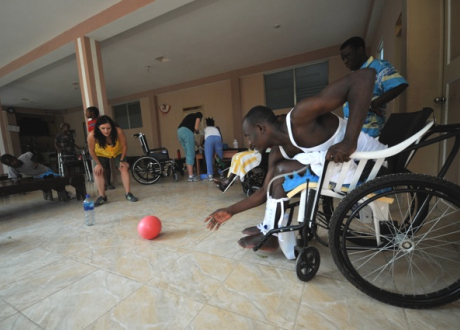
Reclaiming independence, one stretch at a time.
There is no question we still have much work to do. The scope of that work can feel infinite. But continuing it is our only option. We are fortunate to have you helping us lighten the load.
Finally, I hope that you will join me, HEI/SBH staff, and patients as we commemorate the earthquake this Sunday. At 4:53 PM we will gather at the Spinal Cord Injury Center, where we will have a moment of silence to honor those who died, were injured, and continue to suffer 10 years later. I ask that you, too, take that moment to pause, reflect, and recommit yourself to helping Haiti move forward.
Kenbe Fem,
Conor
Conor Shapiro
President and CEO
Health Equity International/St. Boniface Hospital
Your donation will help Rose provide care in the maternity ward in Haiti.
